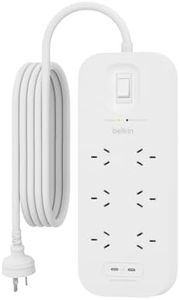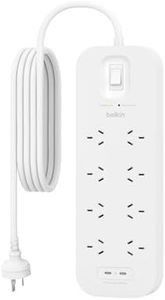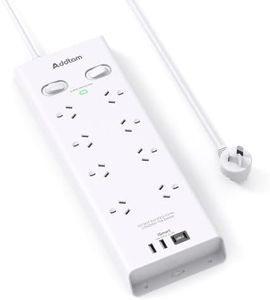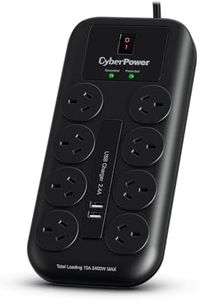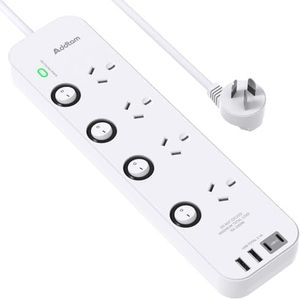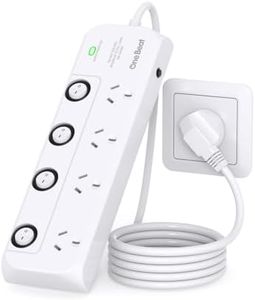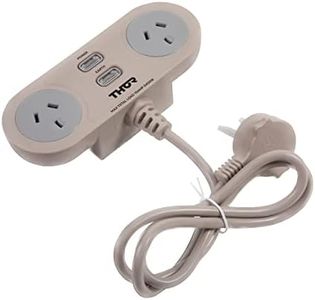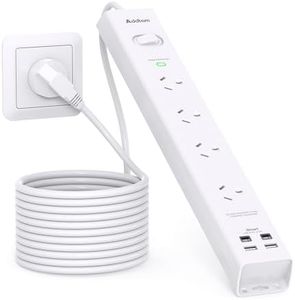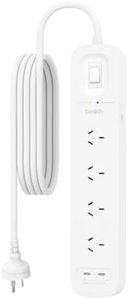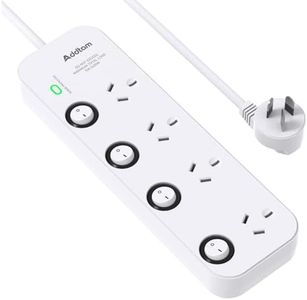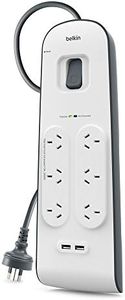We Use CookiesWe use cookies to enhance the security, performance,
functionality and for analytical and promotional activities. By continuing to browse this site you
are agreeing to our privacy policy
10 Best Surge Protectors Joules
From leading brands and best sellers available on the web.Buying Guide for the Best Surge Protectors Joules
When choosing a surge protector, you're not just looking for a simple plug strip—you're safeguarding your electronics from unexpected electrical spikes that can come from storms, power outages, or faulty wiring. Surge protectors help extend the life of your valuable devices by diverting excess electricity away from them. Understanding the key specifications ensures you pick a model that best fits your needs rather than just the first or cheapest one you see.Joule RatingThe joule rating tells you how much energy a surge protector can absorb before it may stop protecting your equipment. Think of this as the 'stamina' of the surge protector: the higher the joule rating, the more electrical energy it can handle before it wears out. Low ratings (around 300-600 joules) are suitable for simpler, less expensive electronics like lamps or alarm clocks. Mid-range ratings (around 600-1,000 joules) work well for everyday office devices like computers, printers, and cordless phones. High ratings (over 1,000 joules) are best if you want to protect sensitive or expensive equipment, like home theaters, gaming consoles, and high-end computers. Consider the value and sensitivity of what you want to protect. If you’re plugging in critical or pricey gadgets, higher joule ratings offer better long-term protection.
Number and Type of OutletsThis specification simply refers to how many devices you can plug in at once, and in some cases, the types of outlets available, like regular AC outlets or USB ports for mobile devices. More outlets are handy for setups with lots of gadgets, but think about both the number and the spacing between outlets—especially for bulkier adapters. Choose a surge protector that matches the number and type of devices you plan to connect, ensuring you won’t need to daisy-chain multiple strips, which can be unsafe.
Clamping VoltageClamping voltage is the level at which the surge protector kicks in to start shunting excess electricity away from your devices. Lower clamping voltages (measured in volts, typically in the 330V-400V range) mean better protection, as the unit reacts faster to smaller surges, which is especially important for delicate electronics. If you want optimal protection for sensitive equipment, aim for a surge protector with a lower clamping voltage. For less-sensitive appliances, a higher clamping voltage can still be adequate.
Response TimeThis tells you how quickly the surge protector responds to a surge. Faster is better, as a delayed response could mean part of the surge reaches your devices. Most surge protectors react in nanoseconds. If you’re protecting highly sensitive or expensive electronics, look for a protector with a very quick response time (under one nanosecond is ideal). For less sensitive gear, a moderate response time is sufficient.
Indicator Lights and Reset FeaturesMany surge protectors have indicator lights that show you when the device is actively providing protection and grounded properly. This helps you know immediately if your devices are still protected or if the surge protector needs to be replaced. Off or missing indicator lights often mean the protective feature is no longer functional even if the outlets still work. If you want added peace of mind, choose a model with clear indicator lights or an audible alarm. Some units also offer reset buttons to restore functionality after a minor surge—this is convenient, but it should not be seen as a replacement for replacing worn-out units.
